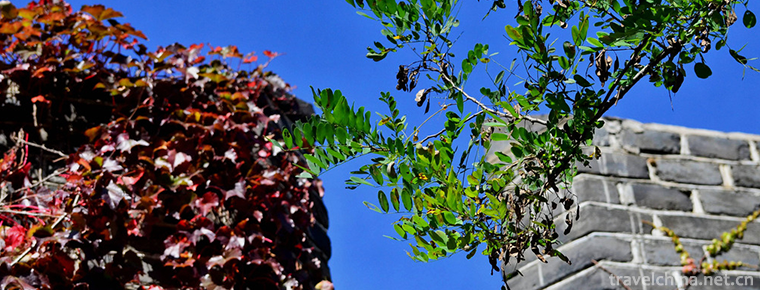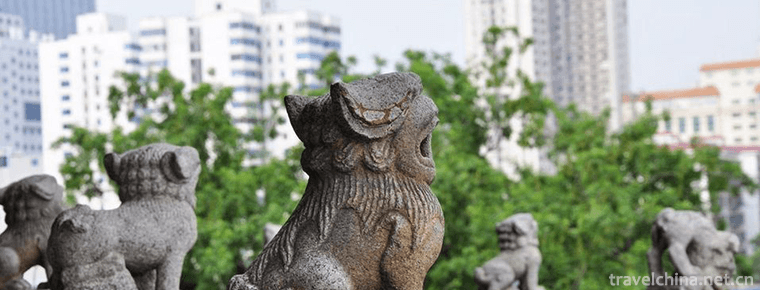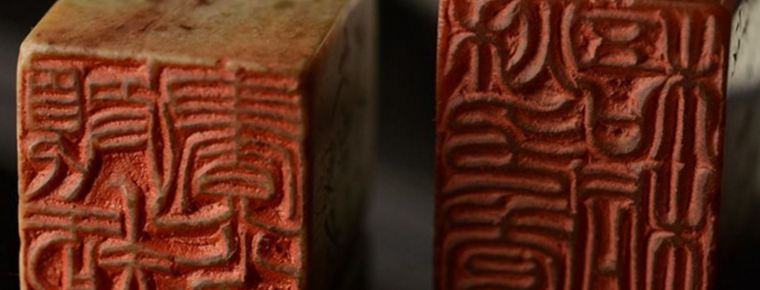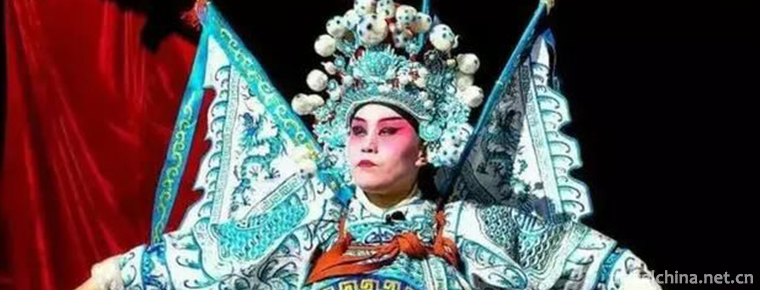Steamed pork with rice flour
Steamed pork with rice flour
Yuan Mei, a Qing Dynasty poet of steamed pork with rice flour, is a Jiangxi dish in Suiyuan food list. It belongs to a variety of cuisines in southern China (such as Sichuan, Chongqing, Hunan, Anhui, Jiangxi, Hubei, Zhejiang and other provinces). It is glutinous and fragrant, crisp and refreshing, fat and thin, red and white, tender but not minced, rice flour is oily and rich in fragrance. According to the cooking method, it can be spicy or sweet. The ingredients can be supplemented with mushrooms, lotus root, pumpkin, sweet potato and other vegetables.
In August 2014, the rice flour meat production technology of Songhu Town, Nanchang, Jiangxi Province was selected into the fourth batch of municipal intangible cultural heritage list of Nanchang.
In September 2018, "Chinese cuisine" was released to the world for the first time. Steamed pork with flour (Sichuan flavor) was selected as one of the "top ten famous dishes in Chongqing" and became one of the 340 classic dishes in China.
Characteristics of dishes
Five fragrance: the fragrance is long, tender but not minced, and the elegant fragrance is unforgettable.
Squeeze the fragrance - add the squeezed pepper, the sour fragrance overflows, and the fragrance remains between the teeth.
Shiitake mushroom - add shiitake mushroom, the mushroom is fragrant, and the lingering fragrance is long.
Making method
Method 1
Main ingredient: 8 Liang with skin and flower meat.
Ingredients: ginger, onion 25g, fried rice 25g, sweet sauce 0.8liang, sugar 0.52liang.
Technological process:
1. Scrape the flesh skin of five flowers, 10 cm long and 0.5 cm thick;
2. Put in the stir fry powder, sweet sauce, sugar, a little starch water, ginger and onion shreds, mix well and steam in the cage for 5 hours, then buckle the plate.
Method two
Ingredients: pork ribs (streaky pork) 500g, lotus root 250g.
Accessories: 75g rice.
Seasonings: 20g sweet sauce, 3G white sugar, 1g pepper, 10g yellow wine, 3G cinnamon, 2G anise, 5g shallot, 2G clove, 2G ginger, 4G salt, 2G monosodium glutamate, 15g soy sauce and 20g rotten milk.
Technological process:
1. Cut the pork into 4cm long, 2.5cm wide and 1cm thick strips, and use the cloth to dry the water in the bowl;
2. Add salt, soy sauce, sweet sauce, Sufu juice, ginger powder, rice wine, monosodium glutamate and sugar to the dried pork, and marinate for 5 minutes;
3. Put the rice in the iron pot and stir fry for 5 minutes. When it turns yellow, add cinnamon, clove and star anise and stir fry for 3 minutes;
4. The fried rice is ground into the size of fish seeds to make rice flour with five fragrance;
5. Scrape and clean the old lotus root, remove the lotus root knot, and cut it into 3cm long and 1cm thick strips;
6. Add 25 grams of refined salt and five spice powder to lotus root strips, mix well, and put them into a bowl for flavor;
7. Mix the pickled pork with five spices;
8. Paste the pork with five fragrant powder on the bottom of the bowl, neatly code it in the bowl, and inlay the meat strips on both sides;
9. Put the bowl of pork and the bowl of lotus root into the drawer and steam for 1 hour;
10. First put the steamed lotus root on the bottom of the plate, then turn the steamed meat over the lotus root, sprinkle pepper and scallion.
Tips:
1. When the pork is pickled, the water content of the meat surface must be drained first, and 3 grams of salt and other seasonings must be added to make the taste penetrate into the meat.
2. Grind the rice flour into millet grains. Mix the lotus root with 1g of refined salt. Steam the meat until it is cooked, rotten and oily.
Method three
Cut the meat into pieces, not too big or too small. Just fit each one, and add some ribs.
Prepare a green onion, change the section, slice ginger, and appropriate amount of pepper.
Potato hob.
Use salt, soy sauce, soy sauce, pepper noodles, sea pepper noodles, pepper powder, sugar to taste the meat. Add ginger and onion by the way.
Heat the pot, pour in rice flour, add pepper, dry fry. When you think it's a little sticky, pour in a little oil, then stir fry until the rice flour turns golden, then it's OK!
Pour the delicious meat and potatoes into the pot, and use rice flour and even.
On the steamer, first fire for 10 minutes, then steam for half an hour or so, specific time to be mastered by each person.
Method four
Materials: 1 pumpkin, 400g ribs, 1 bag of steamed pork powder, rice wine, soy sauce.
Technological process:
1. Cut the top 1 / 3 of the pumpkin and remove the seeds and pulp;
2. Cut ribs into small pieces, put rice wine and a small amount of soy sauce, and then sprinkle with steamed meat flour, and grasp evenly by hand;
3. Marinate the ribs for half an hour, then put in the pumpkin, cover the pumpkin, and steam in the steamer for 30 minutes;
4. Open the lid and water the meat for 15 minutes;
5. Sprinkle some chopped green onion or coriander before eating.
Method five
Ingredient: pork ribs (streaky pork) 400g.
Accessories: 300g peas, 25g breadcrumbs, 50g glutinous rice flour, 100g eggs.
Seasonings: 5g pepper powder, 15g rice wine, 15g soy sauce, 25g rotten milk, 10g ginger, 5g sugar, 150g rapeseed oil, 35g sweet sauce, 15g salt, 15g green onion, 35g starch (broad bean).
Technological process:
1. Slicing of streaky pork;
2. Add pepper noodles, mash juice, soy sauce, tofu milk, ginger powder, sugar, cooking wine, etc. into the pork, mix them with rice flour, and put them into a bowl;
3. Mix the peas with salt and rice flour, add them into the bowl, and steam them in a steamer;
4. Prepare salt and pepper noodles into salt and pepper dishes for use;
5. Turn the steamed pork into a plate, take out the meat slices, and then boil the peas in a cage;
6. Then put the meat beans on the other end of the plate, and put them on the table with the spicy and salty dishes.
Production tips: the product has a frying process, and needs to prepare about 500g of vegetable oil; when frying, it is better to control the oil temperature, and when the steamed meat is fried until the skin is golden.
Method six
Steamed pork with curry powder
Main ingredient: streaky pork 150g.
Ingredients: 1 / 2 carrot, 3 ginger, 2 shallot, and some spicy peanuts.
Seasoning: 2 tablespoons steamed rice noodles, 2 pieces of block curry.
Technological process:
1. Cut the curry into pieces, put it into the pot, add a little water, heat it over a low heat, and stir until the curry melts to a viscous state;
2. Put minced pork into curry sauce, mix well, marinate for half an hour;
3. In the waiting time, peel the carrot and wipe the silk;
4. Take an empty plate and lay a layer of carrot shreds;
5. Wet the rice flour, cover the marinated meat slices with rice flour, and put them into the plate;
6. In a hot water pan, steam for 30 minutes. Sprinkle with chopped peanuts and scallions.
Note: the curry block contains salt, so no salt is added when marinating the meat; the curry sauce should not be too thick, otherwise it is difficult to make the meat taste; the carrot silk on the plate can also be changed into pumpkin, potato or taro according to personal preference; if the meat is large, the steaming time should be prolonged correspondingly.
Skill:
1. There is no seasoning or rice flour in the potato chips. They are light and have a little taste of rice flour meat. If the taste is heavy, you can add some salt to the potatoes, and then mix the steamed meat and rice flour before steaming.
2. About 100g of steamed rice noodles are used, which are adjusted according to personal preferences, but at least each piece of meat should be evenly wrapped with rice noodles.
3. Steam streaky pork, try to choose the best streaky pork with rich layers, fat and thin. In addition, sliced meat is better.
Method seven
It's very troublesome to make the rice flour for steamed meat. The supermarket can buy it out of the box
Wash pork and cut into slices
Add cooking wine
Put in the bean curd and grasp well
Mix the meat with steamed rice noodles and marinate for 20 minutes
Potato peeled and sliced
Take a bowl, put the meat in the bowl, and put the chips on the meat
Add in the steamer, wait for the water to open and put into the bowl, steam over medium heat for 60 minutes
After steaming, take it and buckle it in the plate, then.
Method eight
Ingredients: 1 piece of streaky pork.
Accessories: 1 potato, 1 bag of whole steamed meat powder.
Seasoning: proper amount of cooking wine, raw soy sauce, old soy sauce, a little pepper, proper amount of broth, 5g shallot.
Technological process:
1. Cut the best streaky pork into thin slices together (when the streaky pork is sorted out, put it into the refrigerator to freeze it until it is a little thick, and then take it out, which makes it easier to cut beautiful sliced pork);
2. Cut pork slices, add wine, soy sauce, soy sauce and a little pepper, mix and marinate for 3-4 hours (the proportion of cooking wine, soy sauce and soy sauce is about 1:1:3);
3. Add steamed rice noodles to marinated meat slices, pour a tablespoon of high soup and mix well again;
4. Peel, wash and slice potatoes;
5. Put steamer paper on the bottom of steamer, lay a layer of potatoes first, and then put the processed streaky pork in step 3;
6. Steam in the pot, turn to medium low heat for about 30 minutes, and sprinkle with green onion.
Skill:
1. I didn't mix seasoning or rice flour for the potato chips at the bottom. It was light when eating, with a little taste of rice flour meat. If the taste is heavy, you can add some salt to the potatoes, and then mix the steamed meat and rice flour before steaming.
2. I used about 100g of steamed rice noodles, which is adjusted according to my preference, but at least every piece of meat should be evenly wrapped with rice noodles.
3. Steam streaky pork, try to choose the best streaky pork with rich layers, fat and thin. In addition, sliced meat is better.
Method nine
Ingredient: pork ribs (streaky pork).
Accessories: rice, potato, bean, rice flour, vegetable leaf.
Seasonings: soy sauce, rice wine, rice wine, fermented bean curd juice, peanut oil, ginger powder, pepper noodles, onion.
Technological process:
1. Soak steamed rice noodles in warm water for about three hours.
2. Finely chop the bean petals, and finely chop the onion, ginger and garlic.
3. Wash and slice the streaky pork.
4. Heat the pot, put in peanut oil, heat the oil, then put in bean paste, onion and garlic, stir fry until fragrant, stir fry the red oil and turn off the heat.
5. Add soy sauce, rice wine, yellow rice wine and fermented bean curd juice into the streaky pork.
6. Add ginger powder, pepper noodles and fried bean slices.
7. Mix and marinate for 1 hour, and stir twice in the middle.
8. Drain the rice flour and add water to the marinated streaky pork and mix well.
9. Wash potatoes, peel and cut into pieces.
10. Lay vegetable leaves on the bottom of the steamer and put a layer of potatoes on it.
11. Spread the mixed rice flour and meat on the potatoes and steam for half an hour in the steamer.
12. Steam well and sprinkle with scallion.
Popular area
This dish is mainly popular in South China. Now it has penetrated into the national market and entered the international market, becoming the representative work of Chinese condiments. In the south of China, eating steamed pork is an important traditional custom on the day of summer every year, which is called "supporting summer". It is also a traditional dish that must be eaten during the new year. Chongqing steamed pork is not only steamed and fried, but also pressed (鲊) meat powder and pressed pepper, which are excellent materials for steamed pork. Different regions choose different side dishes, such as sweet potato, pumpkin, lotus root, taro, green bean, etc.
Nutritive value
Fat is rich, and contains a certain amount of protein, carbohydrate, phosphorus, calcium, iron and other microelements and phosphorus ester, niacin and other nutrients, which is conducive to human digestion and absorption, and is a good tonic.
Main nutrition
Pork rib meat (streaky pork): pork is rich in high-quality protein and essential fatty acids, and provides heme (organic iron) and cysteine to promote iron absorption, which can improve iron deficiency anemia; it has the effect of nourishing kidney and blood, nourishing yin and moistening dryness; however, due to the high content of cholesterol in pork, it is not suitable for obese people and people with high blood fat to eat more.
Rice: rice has a very high nutritional effect, which is the basic food to supplement nutrients; rice can provide rich B vitamins; rice has the effects of Tonifying the middle and Qi, strengthening the spleen and stomach, benefiting the essence and strengthening the mind, and the five zang organs, dredging the blood vessels, hearing and eyesight, stopping boredom, thirst and diarrhea.
Lotus root: in tuber food, lotus root has high iron content, so it is suitable for patients with iron deficiency anemia. Lotus root is not very high in sugar, but also contains a lot of vitamin C and dietary fiber, which is very beneficial to people with liver disease, constipation, diabetes and other debilitating diseases. Rich in iron, calcium and other trace elements, plant protein, vitamin and starch content is also very rich, has a significant tonic Qi and blood, enhance human immunity. Lotus root is also rich in vitamin K, which can constrict blood vessels and blood. It is very suitable for those who suffer from congestion, hematemesis, bleeding, urination and hematochezia as well as the puerpera. Lotus root can also eliminate heat and heat. It is a good food for eliminating heat.
Sweet potato: it is mainly used to treat spleen deficiency, edema, sore, swelling and toxin, and constipation due to dryness of intestines.
Pumpkin: it can nourish the middle and Qi, dissipate phlegm and discharge pus.
Nutritional components
It contains 3349.53 kcal of nutrients, 60.21g of protein, 296.60g of fat, 113.08g of carbohydrate, 5.10g of dietary fiber, 6.30ug of vitamin, 102.80ug of carotene, 0.95mg of thiamine, 0.40mg of riboflavin, 14.66mg of nicotinic acid, c117.13mg of vitamin, e3.40mg of vitamin, 166.75mg of calcium, 768.97mg of phosphorus, 3535.06mg of sodium and 1 mg of magnesium 92.83 mg, iron 11.79 mg, zinc 10.30 mg, selenium 23.30 μ g, copper 0.75 mg, manganese 3.95 mg, potassium 1861.56 mg, iodine 1.72 μ g, vitamin B6 (0.15 mg), pantothenic acid 0.45 mg, folic acid 7.35 μ g, vitamin k500.00 μ g, biotin 165.00 μ g, vitamin B12 (15.00 μ g), cholesterol 545.00 mg.
Story legend
Chongqing
Chongqing steamed pork with flour is one of the traditional famous dishes in Wulong and even in southwest of Chongqing. It is said that there was a magistrate named Zhu in Wulong during the Song Dynasty. He was corrupt and bribed, which made the people have no choice but to live. At that time, the master of a restaurant outside the Yamen experienced the people's situation and came up with a kind of food called "rope tied pig eat", "pig" means to satirize "Zhu". He cut the pork into pieces, chopped it into pieces, wrapped it with thin flour skin, and then wrapped it with a piece of powder, which is a rope, meaning to tie the "Zhu" rope and chop it into meat paste. The news came out that the people were in full bloom and wanted to eat some "Zhu" to express their sullen feelings. In this way, the restaurant is thriving. One day, Zhu county magistrate also came to eat "rope binding". The restaurant master hurriedly grabbed a handful of noodles and sprinkled them on it, then covered them with steamers. Because of the delicious smell, the county magistrate asked what was eating in the cage. The master said it was steamed meat, which made the county magistrate salivate and shouted: "quickly, open the cage and let the master eat some steamed meat!" This time, Zhu county officials ate most of the steamed pork with grate, and then came to eat it every day. Later, when he heard the metaphor of steamed meat, he died in Yamen. Since then, steamed meat has gradually spread and become a unique snack in Chongqing.
Hubei
"Steamed pork with flour" was once popular in Mianyang (Tianmen, Honghu, Qianjiang and Mianyang are now renamed Xiantao). It is known as the "hometown of steamed vegetables" and one of the famous "three steams in Mianyang". And the story of "Mianyang three steams" is even more well-known. "Mianyang three steams" is said to have originated from the story of Chen Youlang, the leader of the peasant uprising at the end of the Yuan Dynasty. At that time, on the eve of his expedition to Caishiji from Mianyang, Chen Youlang, in order to reward soldiers for bravery and morale, asked the army chef to cook some local dishes according to the word "March", which implied the victory of the expedition. The wise Cook made steamed fish, steamed meat and steamed round according to the homonym meaning of "Zheng" and "Zheng". Chen Youliang's wife, Luo Shi, once again took advantage of the fact that she washed and cut off the ready-made vegetable, Shanghao, and mixed it with rice flour steamed with fish meat and seasoning, and then steamed it. When it was delivered to the dining table, the general was very pleased with the food and praised it. Since then, the common people in this area have followed suit. In the festive days, they also use "three steams" as the main dish to entertain guests, which has been handed down to this day.
Jiangxi
Yuan Mei's "Suiyuan's menu" recorded that "steamed pork with flour is made of meat mixed with refined and fat, fried with rice flour yellow, steamed with noodles sauce, and padded with cabbage. When cooked, it is not only delicious in meat, but also delicious in vegetables. Without water, the taste is unique. Jiangxi people's food. "
In Jiangxi Province, it is a fixed traditional custom to eat rice flour and meat every summer, which is called "supporting summer". As the origin of steamed pork with flour, the most ancient method of steamed pork with cabbage leaves has been preserved in Songhu area of Nanchang, Jiangxi Province. The cage bed banquet, popular in the newly-built and Fengcheng areas of Nanchang, is a unique traditional banquet form with steamed pork as the main role. One cage bed steamed pork has a large table and is very domineering. In addition to steamed pork, there are also Chinese toon pork, pasted pork, pan fried pork, smoked pork, sun dried pork, crispy pork, stir fried pork and stir fried pork. The richness of these manifestations is rare in other provinces.
Henan
At the end of Ming Dynasty and the beginning of Qing Dynasty, Emperor Chongzhen went on a tour to the south. When he arrived at mingling (fenghouling) on an outing, it was too late to go back to the shop. He was hungry and thirsty in his stomach. The shop was too far away in the dark to go back. So he stayed in a farmer's shop named Ding. The kind-hearted Ding couple were very hospitable. They took out the buttoned meat prepared for the Spring Festival and sent it to Chongzhen for eating after processing. After Chongzhen's eating, Dayue, when the Ding family told him that this was their ancestral steamed pork, they were more nostalgic for the taste just now, sweet with salt; fat but not greasy, with endless aftertaste.
The next day, when we left at dawn, Chongzhen said to chef Ding, "it's wonderful to eat the pink meat. It's a great pity not to come to fenghouling in zhenghancheng! It's a pity not to eat steamed pork with Ding's powder! " Later, Chongzhen told them his identity, and took chef Ding as the imperial chef, and went to the palace with him. Since then, Ding's steamed pork has been popular.
Hangzhou
Steamed pork with flour is a famous dish with high reputation in Hangzhou. It began in the late Qing Dynasty. It is said that its name is related to the "wind lotus of Quyuan", one of the ten sceneries of the West Lake. "Wind lotus in Quyuan" is at the north end of the SUDI, where there are many lotus flowers. Every summer, the breeze blows on the face, the fragrance of flowers, cool and refreshing, making tourists linger.
Steamed pork with flour was a chef of Hangzhou restaurant at that time. In order to meet the needs of summer tourists to enjoy the scenery and taste, the fresh lotus leaves of "Quyuan Fenghe" were used to wrap the fried rice noodles and seasoned pork and steam them. The taste of the steamed pork is fragrant, fresh, fat, soft, waxy and not greasy. It is suitable for eating in summer. Later, with the spread of the reputation of "lotus in Quyuan" in the West Lake, the reputation of steamed pork with flour also increased, becoming a famous characteristic dish in Hangzhou.
Honor
On September 10, 2018, the first 2018 "Chinese cuisine" activity to the world and the national provincial regional classic dishes and famous banquets large-scale exchange meeting were held in Zhengzhou, Henan Province.
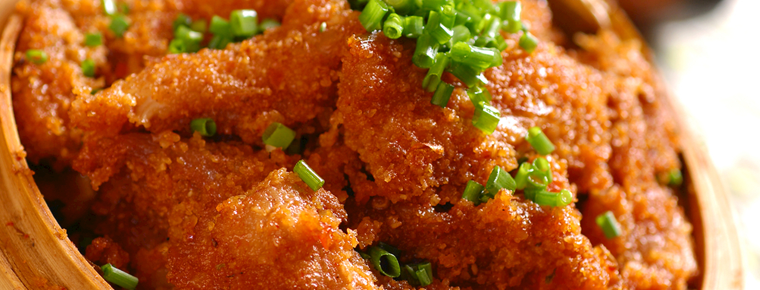
-
Guyuan Northern Dynasty Sui and Tang Dynasties Cemetery
The tombs of the Northern Dynasty and Sui and Tang Dynasties in Guyuan are located in Xiaomazhuang, Yangfang, Shengou, Dabao, Wanglioba, five natural villages in the West and south suburbs of Yuanzhou.
Views: 116 Time 2019-01-12 -
Hushan Great Wall
Hushan Great Wall is situated on the Yalu River, 15 kilometers east of Dandong City. It is an important scenic spot in the national Yalu River scenic spot. It is across the river from Korea's Yuchidao.
Views: 123 Time 2019-01-16 -
Jianglangshan 28du Tourist Area
28du Town, located in Jiangshan, Zhejiang Province, is a famous historical and cultural town. It is a writer's creation base in Zhejiang Province. It is located at the junction of Zhejiang,.
Views: 192 Time 2019-01-21 -
Tianxin Pavilion
Tianxin Pavilion is located in the southeast corner of Changsha City, Hunan Province. It is a tower on the ancient city wall of Changsha where Chengnan Road meets Tianxin Road..
Views: 118 Time 2019-02-22 -
Acrobatics in Dongbeizhuang
Dongbeizhuang acrobatics is a traditional folk acrobatics in Puyang City. Dongbeizhuang, Yuecun Township in Puyang City, is a pearl in the vast plain of northern Henan Province.
Views: 112 Time 2019-04-27 -
Jinshi seal carving
Epigraphic seal carving is an ancient Chinese traditional arts and crafts, which belongs to an important part of Chinese stone culture. As the birthplace of inscription, Xiling Seal Press has been lis.
Views: 298 Time 2019-05-07 -
Drama Costume and Opera Production Skills
Drama costume and costume production skills, local traditional handicraft in Suzhou City, Jiangsu Province, one of the national intangible cultural heritage..
Views: 97 Time 2019-05-08 -
Li Folk Songs
Folk songs play an important role in daily life. Almost all men, women and children can sing. Especially on festive days, singing is an indispensable recreational activity. In the daily production wor.
Views: 308 Time 2019-05-12 -
Salt drying Techniques
Salt-drying process is a special kind of handicraft technology. Its existing form is different from the general intangible culture. Its products are closely related to people's daily life and industri.
Views: 136 Time 2019-06-13 -
Tongzhou Bangzi
Tongzhou Bangzi originated in more than ten counties of Dali (Gutongzhou) Center in the east of Guanzhong, Shaanxi Province. Accompanied instruments, besides drum beating, are also named for their str.
Views: 93 Time 2019-06-21 -
Panzhihua from the Ming Dynasty to the Republic of China
In 1382, in the 15th year of Hongwu reign of the Ming Dynasty, the Xuanwei Department of paloros put Yunnan under the jurisdiction of Sichuan Chengxuan political envoys. In this place, there is another commander's Department of Sichuan Xingdu, which leads the lawsuits.
Views: 89 Time 2020-12-14 -
Transportation in Mianyang
By the end of 2018, Mianyang had 20146 km of highways, 412 km of expressways, 268 km of Railways and 57 civil aviation routes..
Views: 153 Time 2020-12-14

